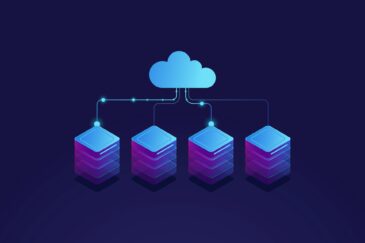Cloud migration refers to transferring data, applications, or workloads from an on-premises to a cloud environment. This transition is driven by the advantages of the cloud, which include scalability, cost efficiency, flexibility, and the ability to leverage emerging technologies. Here’s an overview of cloud migration, including strategy, process, and tools:
In this initial phase, organizations thoroughly evaluate their existing on-premises infrastructure, applications, and data. This involves understanding the current state of IT assets, identifying business goals, and establishing a migration roadmap. A comprehensive assessment helps define the scope of the migration, set realistic expectations, and determine the appropriate cloud services and deployment models for the organization’s specific needs.
Security involves identifying and addressing potential security risks associated with the migration process. It includes implementing measures to ensure data confidentiality, integrity, and availability. Additionally, organizations must adhere to industry-specific compliance regulations, implementing necessary controls to maintain a secure cloud environment.
This phase involves training staff on cloud technologies, tools, and best practices. Additionally, it encompasses change management strategies to help employees adapt to new workflows, processes, and tools introduced during the migration, ensuring a smooth transition and minimizing disruptions.
This step involves deciding how to migrate existing applications to the cloud, whether through rehosting, refactoring, rearchitecting, or rebuilding. Compatibility with the chosen cloud platform is crucial, and organizations must ensure that applications function optimally in the new environment. Careful consideration of each application’s requirements and dependencies guides the migration strategy.
Thorough testing is performed at various stages of the migration to identify and rectify any issues. This includes functional testing to ensure applications operate as expected, performance testing to optimize for the cloud environment, and security testing to address vulnerabilities. Rigorous testing helps minimize the risk of post-migration problems and ensures a successful transition to the cloud.
This initial phase of the cloud migration process involves a comprehensive discovery and assessment of the existing on-premises environment. Organizations identify and categorize their assets, including applications, data, and dependencies. This phase aims to create a detailed inventory, assess the current state of IT infrastructure, and understand the relationships between different components. The information gathered during discovery informs subsequent migration planning, helping organizations decide which assets to migrate, prioritize migration tasks, and anticipate potential challenges.
Before a full-scale migration, organizations often conduct a proof of concept to validate the chosen migration strategy. A PoC involves migrating a small, representative set of applications or workloads to the cloud environment. This step helps identify any unforeseen issues, allows for performance testing in the new environment, and validates the feasibility of the selected migration approach. Lessons learned from the PoC contribute to refining the overall migration plan and addressing specific challenges before the complete migration begins.
Depending on the chosen migration strategy, data migration from on-premises to the cloud could involve lift-and-shift, database migration, or hybrid solutions. Ensuring data consistency, integrity, and security is crucial during this process. This process may be performed incrementally to minimize downtime and ensure a smooth transition. Comprehensive planning and validation processes guarantee that data migration from on-premises to the cloud is done successfully without loss or corruption.
Once data migration from on-premises to the cloud is successful, the focus shifts to migrating applications to the cloud environment. Organizations follow the strategy outlined during the planning phase, which may involve rehosting, refactoring, rearchitecting, or rebuilding applications to align with cloud-native principles. The goal is to ensure that applications function optimally in the cloud, taking advantage of the scalability and features offered by the chosen cloud platform.
Rigorous testing is a critical component of the cloud migration process that includes functional testing to verify that applications operate as expected, performance testing to optimize for the cloud environment, and security testing to identify and address vulnerabilities. Validation against predefined criteria ensures the migrated environment meets performance, reliability, and security standards. Testing is conducted at various stages, from the PoC to the final deployment, to catch and rectify issues early in the process.
The deployment phase involves rolling out the migration plan in stages or all at once, depending on the chosen strategy. Close monitoring is essential during deployment to detect and address any issues promptly. Whether utilizing a phased approach or a big-bang deployment, organizations aim to minimize downtime and disruptions while ensuring that users and stakeholders experience a seamless transition to the new cloud environment.
Cloud service providers offer specialized tools to facilitate migrating to their respective platforms. These tools provide centralized dashboards, assessment capabilities, and step-by-step guidance, allowing organizations to plan, track, and execute their migrations efficiently. Users can get insights into the status of each migration task, dependencies, and performance metrics, streamlining the overall migration process and providing visibility into the migration journey.
Several third-party tools specialize in aiding organizations during the cloud migration process, offering features beyond what CSP-specific tools provide. These tools often support multi-cloud environments, allowing businesses to migrate workloads across different cloud platforms or between on-premises and cloud environments. They typically offer automation capabilities, reducing manual effort and ensuring a smoother transition. They might also include features for continuous replication, minimizing downtime during the migration process.
IaC tools play a crucial role in defining and provisioning cloud infrastructure. These tools enable organizations to codify their infrastructure requirements, making it easier to replicate, version control, and automate the deployment of resources. IaC helps ensure consistency in infrastructure configurations, reducing the risk of errors and simplifying the management of complex cloud environments during and after migration.
Effective team communication and collaboration are crucial for a successful cloud migration. Collaboration tools, such as communication platforms and project management tools, facilitate coordination and information sharing among teams involved in the migration process. These tools help manage tasks, track milestones, and ensure all stakeholders are up-to-date and aligned throughout the migration journey. This promotes a collaborative and organized approach to cloud migration projects.





